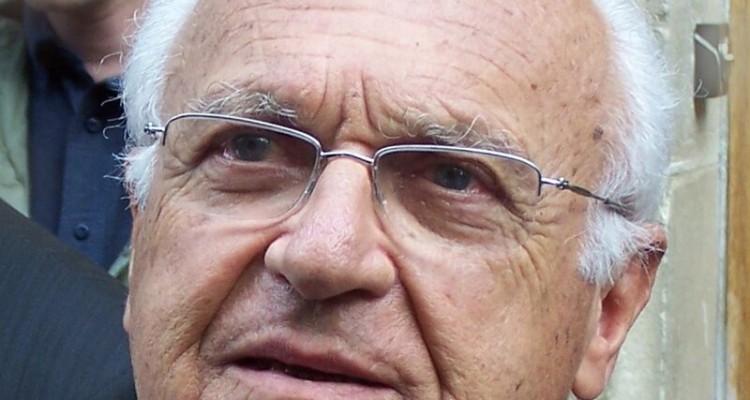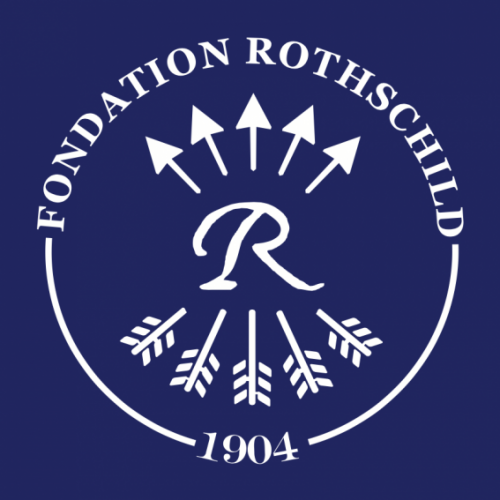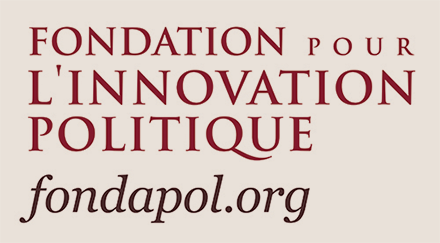“I’ve never stopped thinking about the close relationship between Christianity’s own historical perspective and its ambivalent attitude toward Judaism.“
Carlo Ginzburg’s historical work has shed new light on the Jewish condition, making it possible to consider them in their minority, marginal dimension, alongside the witches and lepers persecuted by the Inquisition. In this interview with Avishag Zafrani, the renowned scholar discusses the subjective determinations that led him to approach the history of persecution from the point of view of the victims, and how this approach challenges the practice and position of the historian.
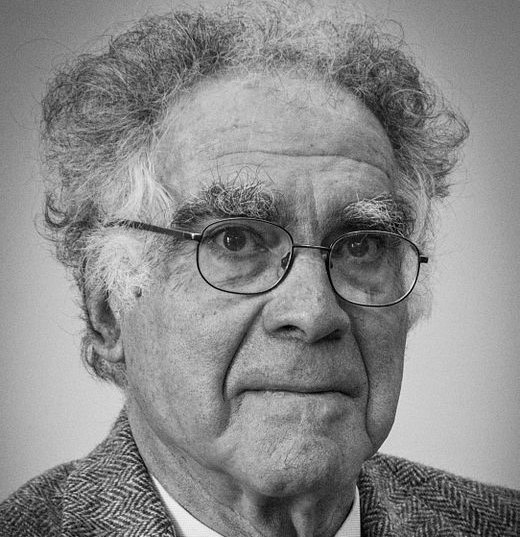
Avishag Zafrani:
In your preface to the new edition of The Night Battles[1]you return to a biographical episode that you initially suppressed and whose significance you have only belatedly realized. The scene takes place during the war when you were forced into hiding and your grandmother told you to take a non-Jewish name. You write—”At that moment I became a Jew,” i.e., when you had to go into hiding. Did this episode in your life play a role in motivating your research?
Carlo Ginzburg : When I said that I felt I became a Jew at that moment in my life—I was five years old at the time—that was obviously a retrospective consideration. But I certainly think that this feeling of being Jewish had a profound effect. I’m even convinced that this surprising repression was part of an unconscious strategy. I also believe that the said repression strengthened the connection between my personal experience and my orientation as a researcher. So, yes, issues related to Jewish history have become very important in my work.
In my last book, La Lettre tue [The Letter Kills][2]—the title refers to Paul of Tarsus’s dictum that “the letter kills, it’s the Spirit that gives life”—I wanted to add a gloss: “the letter kills those who ignore it”. I’ve taken Paul’s words in the opposite direction, to show that the Spirit, in its fundamentalist form, not only gives life but can also “kill.” In other words, Christianity’s spiritual overcoming (the law of the heart) of Jewish materialism (the engraved law), of the Pauline type, appropriates the Old Testament and robs it of its truth.
In fact, I’ve never stopped thinking about the following idea, which I think is the only really original idea I’ve ever had—that of a close relationship between Christianity’s own historical perspective and its ambivalent attitude toward Judaism. I’ve thought and written a lot about this relationship, for example in an essay on Augustine’s reading of the Bible that I included in La leterra uccide. Augustine’s allegorical reading of the Bible is usually emphasized, but I was surprised to find that he often produces a literal reading as well. When asked about the polygamy of the patriarchs, he says that we must try to understand this custom as such, and therefore not allegorically, as belonging to a “different world”—what we would say today is a different society. I think this comment is a reference to Augustine’s teaching of rhetoric and his familiarity with the idea that the speaker must adapt his speech to his audience. I think this kind of reasoning has had a lasting effect. It promotes the idea that there are criteria of value that vary across history and societies. It’s an idea that Aristotle, for example, would never have put forward or thought about. I think it was precisely the reading of the Bible and the distance created by Christianity’s ambivalent attitude toward Judaism that made it possible to think about historical differentiation (because Christianity had to be distinguished from Judaism, and the latter had to be contextualized). Here, however, the difference is thought in terms of overcoming. In this paper, which I published a long time ago, I said that this attitude goes back to Hegel and his secularized reading of Augustine. That was just a hypothesis. But in another article that I also published in La leterra uccide—”Svelare la rivelazione” [Reveal the Revelation]—I cited texts by Hegel that show that the latter was well aware that the very idea of the dialectic of history had its origins in Christianity’s ambivalent attitude toward Judaism[3]. This is something that troubled me greatly. This ambivalence implies that our idea of historical perspective, which comes from Christianity, is linked to an attitude that, through Christian anti-Judaism, contributed to the persecution of the Jews for centuries.
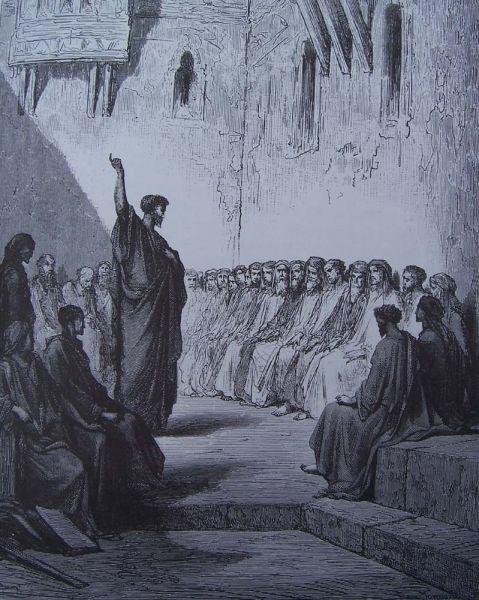
This is indeed an important and central idea in your research. We’ll come back to this later, with particular reference to the epistemological dimension of this historical perspective. But first, I’d like to come back to the Jewish condition and its relationship to persecution as the origin of a choice of object in your research. Would you say that taking the point of view of the victims, as in Storia notturna[4], has structured your work as a historian?
The idea of trying to reconstruct the victim’s point of view had several roots. On the one hand, I drew on Antonio Gramsci’s idea of the culture of the subaltern classes. On the other hand, I was influenced by Michelet’s La Sorcière [The Witch], which presents the figure of the witch as an incarnation of revolt. When I began this work, I initially underestimated how difficult it was to grasp the meaning of the victims’ attitudes, because it meant reading the archives of persecution against the grain (to borrow a phrase from Walter Benjamin). In fact, I guess it was my commitment to this path, when I was only 20 years old, that led me beyond historical research to an analysis of historical methods. This reflection on the method is linked, I think, to the attempt to read between the lines of the witch trials. The difficulty lay in the fact that the men and women accused of witchcraft could only be approached through documents in which they fulfilled the expectations of their inquisitors. Occasionally, and fortunately, as in the extraordinarily rich Benandanti file[5], we can see a profound discrepancy. But often the accusation seems to overwhelm the subjectivity and the attitude of the accused. So we had to think about a method that would allow us to recover them, starting with the reading of documents that were intended to erase them. In retrospect, I realized that reading the Inquisition trials in this way (i.e., against the grain) also offered the possibility of reading documents related to European colonial domination. Indeed, it is possible to understand the attitudes and behaviors of the colonized through documents produced by the colonizers. In both cases, there is a profound cultural gap that is filtered through an asymmetry of power. There’s no doubt that the Inquisition played a role in European colonization. But the analogy I’m proposing isn’t just meant to remind us of that. Rather, it is meant to demonstrate the possibility of reading the enormous mass of documents produced by colonizers over the centuries in an oblique way (comparable to the one I used with the witch trials).
Your concern also focused on the fact that, although you tried to take the victims’ point of view, there remained an “intellectual contiguity” between the researcher and the inquisitors. How does this intellectual contiguity manifest itself?
Yes, I wrote an article when I realized this difficulty. Obviously, something was troubling about this contiguity. The article is entitled “The Inquisitor as Anthropologist.“[6] The most striking example is not related to a trial, but to a sermon delivered by Nicolas de Cues, the great philosopher and Bishop of Brixen[7]. There is a Latin version of this sermon that refers to a witch trial that has been lost. Nicolas de Cues tells of two women who had worshipped a deity they called “Richella”—a word that suggests an association with wealth. What’s interesting here is the way Nicolas de Cues, bishop and philosopher, tried to analyze the attitudes of the two women. There is compassion, distance, and philological passion all at the same time, linked to his pastoral concerns. But other cases allow us to note this contiguity. For example, there’s a problem that I analyzed in my book on the Benandanti family, which left its mark on several documents. There are Milanese trials from the 14th century in which women confess to having organized a cult in homage to Diana. Well, for the inquisitors, Diana was the devil. But why was Diana the devil? What was Diana’s relationship to the devil? These questions are not so far removed from those we ask ourselves as researchers.
I’m going to tell you about a little episode that I mentioned in one of my books. I was in Moscow several years ago to give a lecture, and I got a call from somebody who said, “I’m calling on behalf of the Memorial Group. We’d like to arrange a public colloquium with you.” Having heard about the Memorial Group’s human rights work in Chechnya, I was flattered but surprised. I said, “But why? Why with me and about what?” And then they replied, “We read your article in English, ‘The Inquisitor as Anthropologist.’ ” Their idea was as follows—we could have used my method of reading the witch trials to work on the trials of the Stalinist era from an unconventional perspective, beyond the prejudices of the judges, to grasp the representations, positions, and points of view of the accused, both men and women. This was a rather delicate project, given the role of torture in these trials (and also in the Inquisition trials). I don’t know if anyone was finally able to work in this direction, but the discussion with the Memorial group touched me deeply. Of course, I never expected a similar reaction to my essay, but that’s the kind of reception a text is always likely to get.
Perhaps there’s a reversal in the positioning of research once we realize this intellectual contiguity between researchers and inquisitors. And at the same time, there must be a difference—the inquisitors projected “fictions” onto the victims.
I am reluctant to use the term “fictions.” Prejudice, yes, no doubt; it happens in research too even if the effects are normally less tragic. In another article, “Microhistory and World History,” I stressed the importance of mental experimentation in research—we grope around and formulate hypotheses, which are sometimes accepted, sometimes rejected[8]. I’m not sure that we can attribute such an attitude to the inquisitors. If so, this uncertainty and trial and error left no trace in the trials…
The inquisitors already had the answer. The researcher doesn’t have it, or shouldn’t have it.
Yes, that’s true. For example, the Benandante did not live up to the Inquisitors’ expectations, which created a serious problem for them. So that the latter had to try to convince the former that they were really sorcerers, when in fact they were counter-sorcerers—hence the importance of this anomaly.
When you realize, belatedly and through a friend, that your research on the victims of the Inquisition is linked to this Jewish condition, you are at first astonished. What does it mean for the researcher to understand the unconscious motives behind his research?
This dialogue with an Italian art historian friend, Paolo Fossati, took place in Turin. And indeed, I was surprised. The connection was quite obvious, but I wasn’t aware of it at all. As I said, there was this repression. Did anything change from that moment on? I’m not sure. In my subsequent work on the origins of the Sabbath stereotype—a subject I had already begun to think about—I analyzed the role played by the persecution of the Jews. I think the connection between Jews and witches would have come about in the long run anyway, but I’m not sure. It’s hard to prove.

It’s not certain because it’s also possible to study the witch hunts from a more feminist perspective, and in that context, the Jewish figure is sometimes very little used. However, you have indeed dealt with the persecution of various types of minorities and have consequently mobilized the “Jewish question.” You also used the word “strategy” at the very beginning of our interview, which reminds me a lot of Claude Lévi-Strauss, who studied all the tribes of the world except his own, except the Jews. In a way, he was pointing out how difficult it is to study oneself, to make oneself the object of study.
On the contrary, I would say that for decades I’ve been trying to study myself, using a literary genre, the Afterword, which I like very much. I’ve had the opportunity to republish books I wrote 50 years ago, and I’ve been able to look at myself from a distance. As I always say (and I’ve written about it too), in this case, narcissism isn’t the goal, it’s a means—an instrument for looking at oneself from a distance. I’d never thought of this, but perhaps this passion for retrospective reflection is linked to the paradoxical absence, for decades, of any awareness of the relationship between my experience as a Jew and the attempt to grasp the attitudes of the victims. Perhaps the idea that retrospective reflection was necessary was linked to this long silence. I spoke of strategy, and added “unconscious,” a “strategy of the unconscious”… Of course, this is something we can’t prove. If you like, there’s an argumentum ex silentio here, in the sense that the connection was so obvious that if I wasn’t aware of it, we have to assume something was going on deep down—repression, in other words.
Was there a purpose? I really don’t know. It’s worth pointing out that, when I started working on witches, the subject was completely ignored by historians, except for research into the persecution of witches. I’m thinking of a famous essay by Lucien Febvre, which analyzed the attitudes of judges and public opinion toward witchcraft. For anthropologists, it was quite a different matter—indigenous beliefs and attitudes toward witchcraft were a central issue. You mentioned Lévi-Strauss. I remember approaching his work starting with an essay that is included in “Structural Anthropology: The Wizard and the Sorcerer.“[9] I remember the intellectual shock I felt when I read it—it was a completely different perspective from the one I was familiar with. There was nothing unusual about this encounter—at the time, in the 60s and 70s, there was a lively dialogue between historians and anthropologists. And yet I would like to emphasize (and I have done so several times) that for me Lévi-Strauss played the role of the Devil’s advocate,i.e., the figure created by the Catholic Church at the beginning of the 17th century who, in canonization trials, asks troubling questions that are difficult to answer. And I said that, in my opinion, historians and researchers in general should introduce the figure of the Devil’s Advocate to enter into an ongoing dialogue with him.
Is it a coincidence that a Jewish author finds himself in the position of the Devil’s advocate?
Not necessarily. I wrote an essay, published in Israel, about a series of writings, circulating in England in the 17th century, where the Jew played the role of the Devil’s advocate[10]. When someone wanted to express doubts about issues central to the Christian religion, such as the veracity of Jesus’ miracles, dialogues were written in which such doubts were formulated by a Jew. In principle, such a devious literary strategy allowed one to respond to offended critics who asked, “What on earth have you written?” by saying, “No, it’s the Jews who say that.” These writings also reveal the resources of dialogue as a literary genre (my essay was published as a Buber Lecture: A Tribute to Martin Buber, Philosopher of Dialogue).
The Witches’ Sabbath is a fundamental book in that it studies the similarities between the condition of Jews, witches, and lepers, who are on the margins of society and therefore between two worlds, that of the living and that of the dead. As a result, an occult power is projected onto them (that of “trading” with the dead). I can’t help but draw an analogy with Marc Bloch’s idea that history maintains a link between the living and the dead. The Jewish condition, as described in the relationship between the living and the dead., in the Witches’ Sabbath, would then appear to be a condition of the historian’s craft—even if one disagrees with Yerushalmi’s theses on the distinction between memory and history in Judaism, and on the fact that the Jews, bound by their imperative of memory, their “remembering” (zakhor) in the long term, were characterized until the 19th century by their indifference to historiography.
There is nothing specifically Jewish about the relationship between the living and the dead, which is at the heart of historical knowledge as a relationship to the past. In fact, according to Yerushalmi, the late emergence of historiography in the Jewish world was linked to the importance of the ritual and its implications[11]. At the end of my book, I expanded on a remark by Walter Benjamin, pointing out that the narratives I had analyzed contained a core that is the matrix of all possible narratives—a journey, there and back, to the world of the dead. I show that groups with no connection to Judaism were accused of having a privileged relationship with the dead. In a peasant community, for example, access to the world of the dead implied a rather ambivalent magical power—qui scit sanare scit destruere, “whoever is able to heal is also able to destroy,” as we read in a 16th century witch trial in Modena.
At this point in your research, since as an anthropologist you’re forced to work on beliefs such as Eurasian shamanic beliefs. Are you also working on Jewish beliefs themselves, on the Talmudic writings on these subjects?
The limits of my knowledge have prevented me from addressing this problem. However, we could certainly try to re-read the Talmudic tradition to see if there are elements that relate to this idea of the relationship with the world of the dead. But the problem is to literally go there (to the world of the dead) and then come back to our world. It’s precisely this journey that is “shamanic,” this “coming and going” that is, let’s say, the privilege granted only to a few in certain communities.
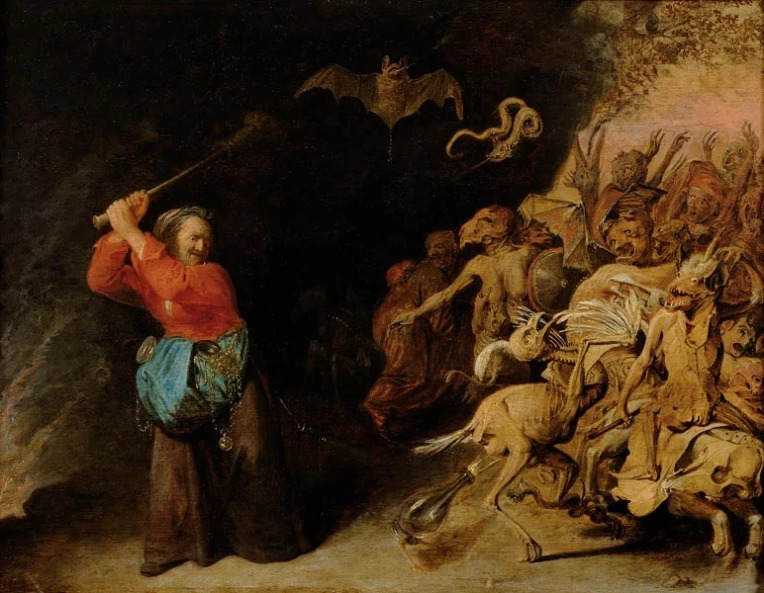
I think you mentioned it somewhere, because in the Jewish tradition there is not exactly a journey between the living and the dead, but a desire to make the past present and bring it up to date. But again, you distance yourself from this position.
Yes, in my article “Our Words, and Theirs: A Reflection on the Historian’s Craft, Today,” I tried to develop the dichotomy between the categories “etic” and “emic” proposed by a Protestant linguist, anthropologist, and missionary—Kenneth Pike[12]. According to his terminology, etic categories refer to observers; emic categories refer to agents. I have shown, however, that Marc Bloch, in the late 1930s and later in The Historian’s Craft, had thought about this problem in different terms, but in a much more profound way. I’ve tried to rework this dichotomy, also using a dense little essay by Arnaldo Momigliano. In my opinion, the historian begins his research by asking questions that are etic, that is, completely anachronistic. It is only through a dialogue with the emic categories, the point of view of the actors analyzed in the documents that these anachronistic categories can be reformulated, reworked, in order to arrive at something approaching the categories of the past. In the case of anthropology, it’s the same—the anthropologist always starts from categories that are ethnocentric, but through dialogue with the actors, he corrects this initial perspective. In both cases we find this dialogue, this back and forth between our words and theirs.
This must be a question you’ve often been asked, let’s say since 9/11, in connection with the rise of conspiracism, does your study in The Witches’ Sabbath—which allowed you to work on conspiracy-related thought structures—allow you to spot similar structures today? Furthermore, your writings raise the question of what distinguishes simple skepticism from conspiracism…
Yes, it’s a very important question. In the introduction to The Witches’ Sabbath, I distanced myself from conspiracy theory, while stressing that intelligence-led conspiracies do exist. Their importance is obvious-just think of the trajectories of Putin or Bush Sr. The problem is to distinguish between real conspiracies and false conspiracies, and false conspiracies that refer to real conspiracies. I wrote this book before September 11, but I could refer, as far as this idea of conspiracy is concerned, to my experience in Italy during the so-called Years of Lead.
At the time, anarchists were accused of being responsible for certain attacks, but it was discovered long afterward that neo-Nazi groups protected by secret services, including elements of the Italian secret service, were behind these bombings. False plots very often conceal real plots. All of this creates what has come to be called the “fake news” problem. But from the 1980s onward, in an intellectual climate increasingly dominated by postmodern neo-skepticism, the concern with proof became more and more important to me. The lectures I gave in Jerusalem were entitled in English History, Rhetoric and Proof. The association of the question of proof, which seemed like a positivist relic, with the analysis of rhetoric may have come as a surprise or even a “shock” to some. But I wanted to emphasize that there are in fact two traditions in rhetoric. On the one hand, there’s a tradition that goes back to Aristotle and continues with Quintilian and Lorenzo Valla, in which the notion of proof and proofs in the plural is absolutely central. On the other hand, there is an explicitly anti-Aristotelian approach to rhetoric, initiated by Nietzsche, in which the idea of proof disappears. It is rhetoric against proof. If we want to understand some of the ills of our time, I think it is essential to look at this new approach to rhetoric that moves away from the preoccupation with proof. I have insisted on this point in particular because the rejection of the notion of proof has cognitive, moral, and political implications that affect events at the heart of contemporary history. In my essay “Just One Witness: The Extermination of the Jews and the Principle of Reality” from the book Threads and Traces[13], I pointed out that Hayden White, the best-known theorist of the neo-skeptical attitude toward history, while calling Robert Faurisson’s negationist thesis “morally offensive and intellectually disturbing,” nevertheless distanced himself from the refutation of negationism proposed by Pierre Vidal-Naquet in his essay “A Paper Eichmann.”[14] Why? Because the notions of truth and proof were not compatible with White’s theoretical perspective, which identified the true narrative with the effective narrative.
Are we in a period where this second type of rhetoric prevails?
I think that the spread of these ideas by Nietzsche’s epigones has created an intellectual and emotional terrain that has encouraged the spread of fake news. We have to fight against such trends. I think the spread of these ideas by Nietzsche’s epigones has created an intellectual and emotional breeding ground for fake news. We have to fight against this. Several years ago, at a conference at Yale, I spoke of “truth without quotation marks,” making a gesture that is commonplace in academic circles in the United States. Everyone started laughing. I think today people wouldn’t want to laugh so much. A lot has changed.
A questioning of the true, the false and the fictitious runs through your work. What were the criteria used to distinguish them, what method, what positioning guaranteed the true from the false? Going back to what you said at the start of this interview, one of the founding moments of the historical perspective lies in Augustine’s writings on the Jews, namely that the Jews who did not recognize Jesus were simultaneously in error, and witnesses to an archaic truth that they failed to actualize by welcoming the messiah of Christianity. Historical perspective is then understood as an overcoming, a superiority of the present over the past. Does this mean that the history of the Christian West itself is rooted in this tension, in this relationship to the Jews as figures of error? Historical perspective is then understood as an overcoming, a superiority of the present over the past. Does this mean that the history of the Christian West itself is rooted in this tension, in this relationship to the Jews as figures of error?
My view is that the history of the Christian West is not reducible to its relationship with Judaism, however important that may have been. But the Old Testament (the Bible of the Jews) and the New Testament are literally bound together—Marcion lost. The thesis of rejecting the Old as obsolete and keeping only the New was rejected by Christianity. But this is the root of ambiguity. It implies either continuity or divergence, up to and including Christian anti-Judaism.
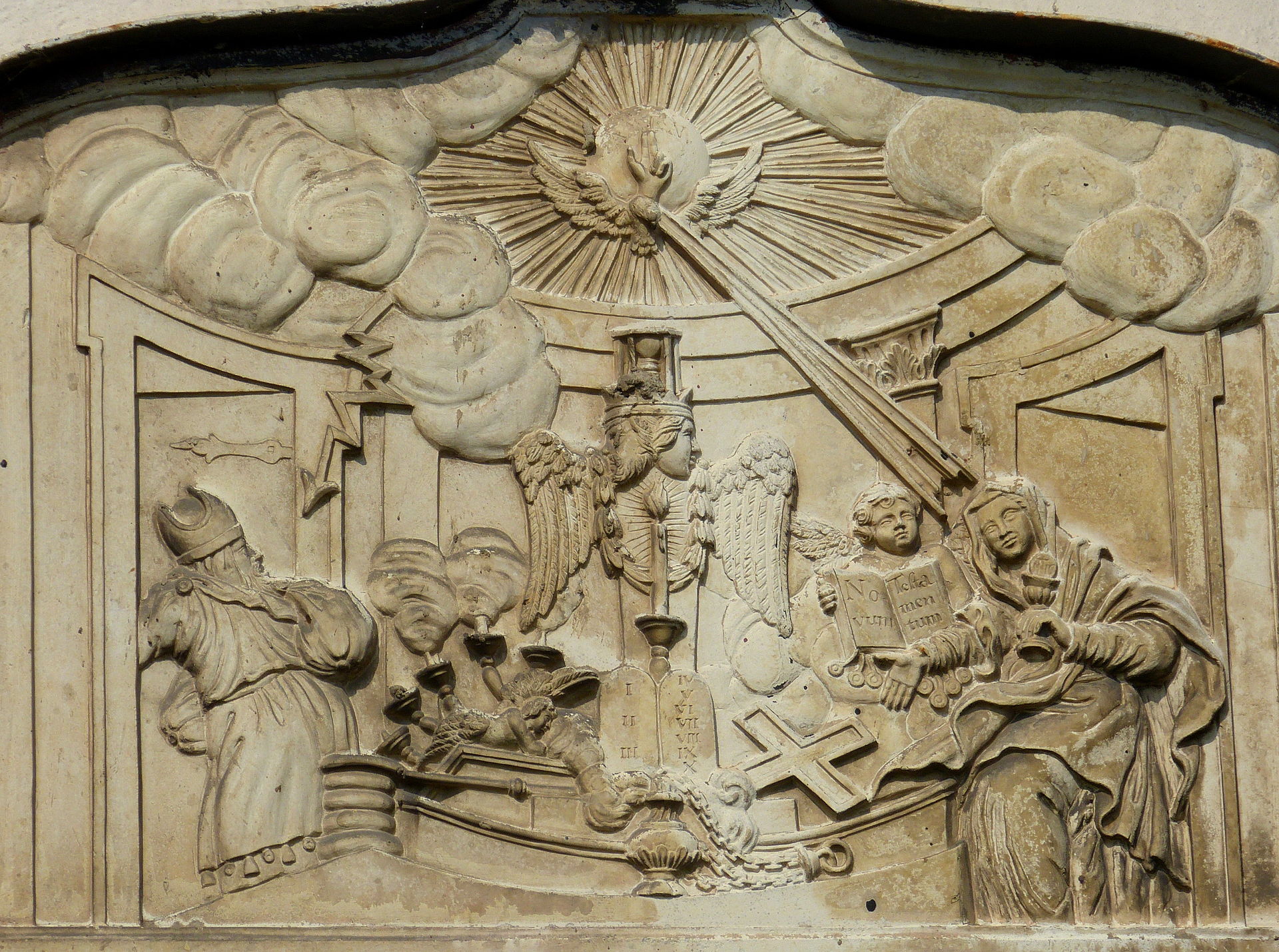
Is Christian anti-Judaism a Gnostic rather than an Augustinian heritage?
It has many roots. In any case, it’s a long-term phenomenon, in different historical contexts. One thinks of usury, which has become an important element of the anti-Judaic stereotype. But the ambivalence remains. Hence the attempts to erase it, for example by denying—as some German theologians tried to do in the 20th century—that Jesus was a Jew. And it was ambivalence that opened up the possibility of formulating this idea of historical perspective and saying, “Yes, there are our words and theirs, our beliefs and theirs. You have to look at it from a perspective.”
It’s worth pointing out that the idea of historical perspective was born out of this Christian ambivalence toward Judaism. The Jewish fact, therefore, cannot be reduced to the study of the existence of a minority within the West. An entire epistemology was structured around this ambivalence.
I couldn’t agree more. The contribution of this minority to European civilization has been immense. And alongside comes the Christian reading of the Bible. Allegorical reading was a way of resolving the tensions between the New and Old Testaments. But as I said, even Augustine at some point saw the need to read certain passages in a literal way, relating them to a certain context. And it’s from this analysis of context that the notion of distance between past and present comes into play. But there’s more—the idea of Verus Israel, Christianity’s claim to be the true Israel, replacing the ancient one. It’s an oxymoronic expression—Christianity would be the truth but as the fulfillment of the Hebraic heritage. I had sensed that there was an idea of “overcoming” here, of surpassing. The roots of history as a dialectical movement are there. In my essay Svelare la rivilazione[15], I tried to demonstrate this point through texts by the young Hegel.
Is there a right and a wrong perspective? In the history of art, you refer to the birth of optical perspective. Is there a perspective that allows for a certain depth of field, while there is one necessarily articulated to a form of dialectical transcendence?
Obviously, there is no dialectical overcoming in the image. But we have to distinguish between metaphors. In Augustine, for example, there is not a visual metaphor, but a musical one—God, “unchanging Creator and Moderator of that which is subject to change,” is compared to an “ineffable musician.”[16]
But could other perspectives allow us to get rid of the initial ambivalence, or to understand it differently? In literary terms, I’m thinking of Kafka, for example, who is said to stand on a crest line, in and out of history, generating a prophetic view of things, or Proust, whose relationship to time is particular and who also finds himself in a transition-tension linked to assimilation.
There are, if you like, several possible variations on the idea of perspective. I wrote an essay on mise en abîme in which I also talked about Proust. Obviously, the mise en abîme in Proust is related to the relationship between the narrator and what’s happening—it implies a frame. As for Kafka, I have to admit that I’ve never addressed this prophetic aspect.
In a text you sent me before this interview, you call for philology and ethno-philology, that is, a comparative exercise between languages, to show the difficulties of disciplines that study the past. It always remains somewhere in the realm of impossibility, at a tragic distance for both the researcher and the translator. In another text dedicated to Primo Levi, you mention a study by Benveniste on the word superstes [superstition], which, before its pejorative evolution, meant the double view of someone who has lived through an event, as witness and survivor. On the one hand, the uncertainty of the historian, on the other, the double certainty of the witness. What exactly does the word of the witness, the survivor, allow us to see?
It’s hard to say. Primo Levi was not a historian. At the same time, he gave testimony, and we could say—as Levi Strauss suggested—that he was a kind of anthropologist who analyzed a very broad phenomenon through his own experience. I think so, because If This Is a Man is a retrospective reflection.
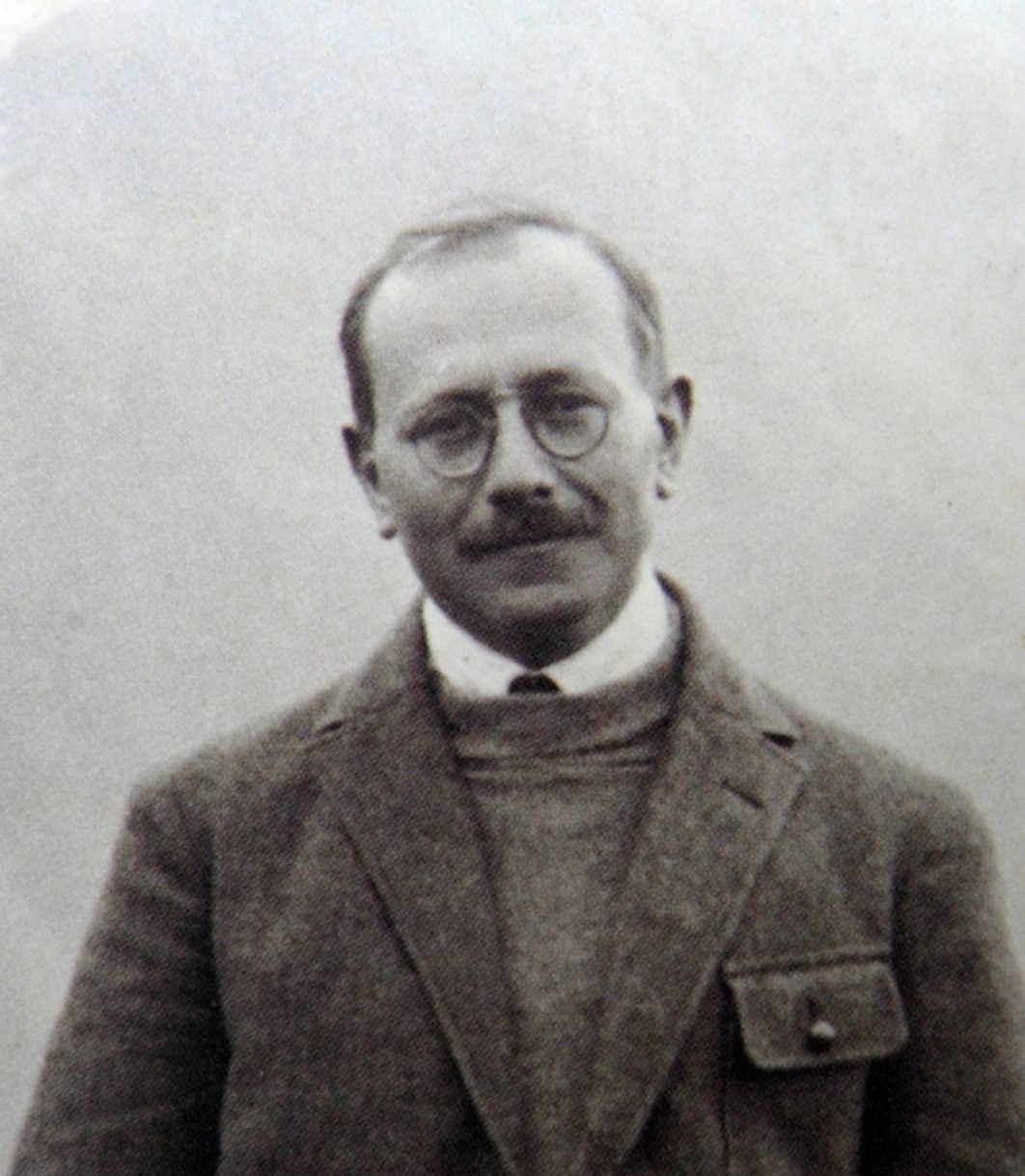
Would the ultimate document be the human being, the witness, the survivor?
I don’t think there is an ultimate document. There are sometimes cases where a single document testifies to an event, and then the document has to be analyzed in depth (there are also false witnesses—I’m thinking of the case of Binjamin Wilkomirski[17]). But even a single document refers to a context and to other documents, which allow us to grasp other voices—a trajectory that lies at the heart of the historical enterprise. What Marc Bloch, for example, did in Les Rois Thaumaturges [Thaumaturgic Kings, not available in English] or Feudal Society is linked to this plurality of documents and their relationship. In Primo Levi’s case, there’s no question of proving an event. The negationists are the ones who think it’s necessary to prove the existence of the Shoah, of the gas chambers. Which is horrible (and grotesque too). The value of Primo Levi’s testimony lies elsewhere.
At the very end of the appendix added to If This Is a Man in 1976, in one of the last sentences of the book, Primo Levi writes—”Anyone who has lived in a camp can never again speak of providence.”
Yes, of course I am. I completely agree with him—he rejects the idea of providence, he doesn’t say that history has no meaning. We can try to understand what history means in the long run, in the very long run. For example, has the relationship between the animal species that we belong to and nature become increasingly fragile? This is also something that can be analyzed in the long term. Does it make sense? Yes, it makes sense to us. But for someone who is not religious (which is my case and also Primo Levi’s case), there is no providence.
As an heir of antifascism, you also comment on the use of political philosophy, Hobbes and Machiavelli, Gramsci, Benedetto Croce and Marx, and you regularly refer to Walter Benjamin, in two respects, it seems— 1) the history of the world must be written, to use Walter Benjamin’s words, “as it appears to us in a moment of danger,” and 2) one should conjure up the estheticization of politics, which is a form of fascism. As a regular commentator on works of art, how does your profession as a historian prevent such an estheticization (or idolatry, if we take this phrase from the point of view of Benjamin’s Jewish content)?
Fascism is not a phenomenon that has always existed—to speak of “eternal fascism” (Umberto Eco) is absurd[18]. I think we need to analyze the conditions that made this phenomenon possible, and also highlight its implications. We can also analyze the relationship between fascism and the history of art, as I did, for example, in the conclusion of my essay on Machiavelli and Michelangelo[19]. But in the case of Mussolini, who speaks of “molding the people,” it is a metaphor, and the connection with art is more indirect. Of course, there are always nuances and differences to point out. Benjamin’s idea of the estheticization of politics as the framework of fascism is a very important thesis that needs to be carefully analyzed. I’m sure Benjamin had read the dialogue between Mussolini and Emil Ludwig (in which the former invokes the power to mold the people, echoing Machiavelli) since it was translated into German and circulated. The estheticization of politics as a form of manipulation—I think this is the theme we need to think about.
Is this work in political philosophy that you occasionally do part of your anti-fascist heritage?
Even if I’m not a political philosopher, it’s a very important heritage, not only on a personal level. Today the right-wing government in Italy has wiped out antifascism. But Italy is not an isolated case. We’re surrounded by other right-wing governments that also have a family resemblance to fascism whether it be in Hungary, in Israel… We’re thinking of Germany, where a neo-Nazi party like the NPD is gaining more and more support. We are thinking of Donald Trump. Someone might object—you’ve just used the notion of family resemblance, launched by a racist scientist like Francis Galton. That’s true, Ludwig Wittgenstein did the same thing. You must learn from the enemy.
Interview by Avishag Zafrani
Post-scriptum
The horrific pogrom perpetrated by Hamas on October 7 has irreversibly changed the history of Israel and Palestine—and not just theirs. In the face of the murder, torture, and rape perpetrated by the terrorist organization, one feels that words are not enough.
Nevertheless, certain questions about this monstrous event and its context remain inescapable; even if it has been said that these questions would imply the minimization of the horror—such an objection is unacceptable not only in the eyes of historians but of all those who try to understand the reality in which we live. As Alon Altaras recalled in an article published in Il Fatto Quotidiano on October 11, 2023, Netanyahu declared in March 2019—”Those who do not want the birth of a Palestinian state must strengthen Hamas and weaken the Palestinian Authority; they must create a different attitude between the areas administered by the Palestinian Authority and the Gaza Strip.” The bloody defeat of Netanyahu’s strategy led him to reverse his approach and identify Hamas with the Palestinian people. The results are before our eyes—a tragedy that continues. I think the answer is obvious. I hope that no one will dare to say that I am trying to justify anti-Semitism, which remains a terrible attitude that has persisted at all levels and in all forms for two millennia. But is the massacre of Palestinian civilians or the indifference to the fate of Israeli hostages any less horrible?
In an article published in the magazine Gli Asini, Stefano Levi Della Torre wrote: “The devastation, famine and indiscriminate massacres in Gaza have done enormous damage to the memory of the Shoah and its universal message of condemnation of ‘crimes against humanity’—a memory and a message that until now have constituted an important bulwark against anti-Semitism.” I have nothing to add except a clarification. This sentence does not suggest an instrumentalization (in the strict sense of the word) of the Shoah, as the connection with the memory of the Shoah has been part of the history of the State of Israel since its establishment. The “damage to the memory of the Shoah” is the unintended result of an ongoing tragedy that cannot be justified by jus ad bellum—the indiscriminate massacre of Palestinian civilians.
Notes
| 1 | C. Ginzburg, The Night Battles: Witchcraft & Agrarian Cults in the Sixteenth & Seventeenth Centuries, translation by John Tedeschi, Routledge Library Editions: Witchcraft, 1992. |
| 2 | C. Ginzburg, La leterra uccide, Milano, Adelphi, 2021 (not available in English) |
| 3 | C. Ginzburg, “Svelare la rivelazione. Una tracci,” in La lettera uccide, p. 21-236 |
| 4 | C. Ginzburg, Storia notturna. Una decifrazione del sabba, Torino, Einaudi, 1989, nuova ed., 2008 (not available in English |
| 5 | The Benandanti were members of an agricultural fertility brotherhood in the Friuli region of northern Italy during the Renaissance. Between 1575 and 1675, the Benandanti were accused of heresy by the Roman Inquisition. They are the focus of Carlo Ginzburg’s study The Night Battles: Witchcraft & Agrarian Cults in the Sixteenth & Seventeenth Centuries, cited above. [Ed. note] |
| 6 | C. Ginzburg, Threads and Traces. True, false, fictive, translated by Ann and John Tedeschi, 2012, University of California Press. |
| 7 | C. Ginzburg, Ecstasies. Deciphering the Witches’ Sabbath, translated by Raymond Rosenthal, London, Hutchinson Radius, 1990. Poi: New York, Pantheon, 1991 |
| 8 | C. Ginzburg, “Microhistoire et histoire du monde” [Microhistory and world history], an article published in the French review Incidence, number 16, Paris, spring 2012, p. 47-81 (not available in English nor Italian) |
| 9 | C. Lévi-Strauss, Anthropologie structurale, Paris, Plon, 1958, p. 183-203 |
| 10 | C. Ginzburg, Inner Dialogues. The Jew as Devil’s Advocate, “Proceedings of The Israel Academy of Sciences and Humanities” (Jerusalem), VIII, 8 (2014) (Martin Buber Lecture), p. 193-215 |
| 11 | Y. H. Yerushalmi, Jewish history and Jewish memory, Seattle, London, University of Washington Press, 1982. |
| 12 | C. Ginzburg, Our Words, and Theirs – A Reflection on the Historian’s Craft, Today, Cambridge, Cambridge Scholars Publishing, 2012 |
| 13 | See footnote 6 above |
| 14 | ”Just one witness” in The Extermination of the Jews and the Limits of Representation (edited by Saul Friedländer), University of California Press, 1992 |
| 15 | In La lettera uccide, Milano, Adelphi, 2021 (Il ramo d’oro, 71), 252 p. (includes slightly modified versions of essays 91, 161, 125, 141, 154, 164, 93, the essay Plasmare il popolo. Machiavelli, Michelangelo [molding the people. Machiavelli, Michelangelo] that appeared in book 29a, the unpublished essay Il segreto di Montaigne [Montaigne’s Secret], essay 137, a new version of essay 156, text 80 of the Varia, and the unpublished essay Svelare la rivelazione. Una traccia [Unveiling Revelation. An outline]) |
| 16 | C. Ginzburg, “Distanza e prospettiva-Due metafore” in Occhiacci di legno: nove riflessioni sulla distanza, Feltrinelli Editore, p. 171 |
| 17 | Binjamin Wilkomirski (pseudonym of Bruno Grosjean/Dössekker) is the author of “Fragments: une enfance 1939-1948″ [Fragments: a childhood 1939-1948] (Calmann-Levy, 1997), a book in which the author claims to be a Holocaust survivor. Investigations revealed that the testimony was a forgery. The affair hit the headlines at the turn of the millennium, prompting intense reflection on the value of a fictional account that had managed to pass itself off as authentic.[Ed. note] |
| 18 | U. Eco, Il fascismo eterno, Milano, La nave di Teseo, 2018 |
| 19 | C. Ginzburg, “Moulding the People: Machiavelli, Michelangelo,” lecture at Columbia University, 2021 (Original title: Nondimanco, Macchiavelli, Pascal) —“The contexts in which Machiavelli and Mussolini lived and acted were completely different. Mussolini was addressing the ‘masses’, that is, a new phenomenon designated by an ambiguous term that referred at once to matter and to man, an ambiguity that opened the way to the conclusion: ‘master the mass like an artist’ “ |


